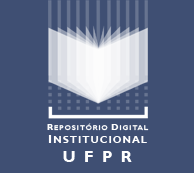Macrophyte islands as an experimental model: new perspectives and a step-by-step protocol to access assumptions of Island Biogeography theory and habitat fragmentation
DOI:
https://doi.org/10.5380/abp.v52i1.88744Palavras-chave:
Neotropical fishes, Ecology of fishes, Amazon fishes, Metacommunity ecology.Resumo
To evaluate whether artificially built macrophyte islands could be used as a short-term and cost-effective experimental model for the study of island biogeography and habitat fragmentation, 20 islands of two different sizes were built and fishes were sampled. Habitat complexity and source-island distance were standardized. A macrophyte bank 200 times larger than the islands was used as a source of individuals. The results show that, in four days, several fish species colonized both small and large islands. After four days, larger islands bore significantly more species than smaller ones. We raise the caveats and new perspectives for studies using this methodology, which can be largely applicable due to its cost-effectiveness in terms of materials, short time required, and flexibility.
Downloads
Publicado
Como Citar
Edição
Seção
Licença
The authors have permission and are encouraged to deposit their papers in personal web pages, institutional repositories or portals before (pre-print) or after (post-print) the publication at Acta Biológica Paranaense. It is just asked, when and where possible, the mention, as a bibliographic reference (including the atributted URL), to the Journal.
The authors license the Acta Biológica Paranaense for the solely purpose of disseminate the published work (peer reviewed version/post-print) in aggregation, curation and indexing systems.
The papers copyrights belong to the authors/respondents. All the journal content (including instructions, editorial policies and templates) - except where otherwise indicated - is under a Creative Commons Attribution 4.0 International, since October 2021.
Once published by Acta Biológica Paranaense, the papers are open access for scholarly and research use. The indication of the original source is mandatory.
Acta Biológica Paranaense does not apply any charges regarding manuscripts submission/processing and papers publication.



